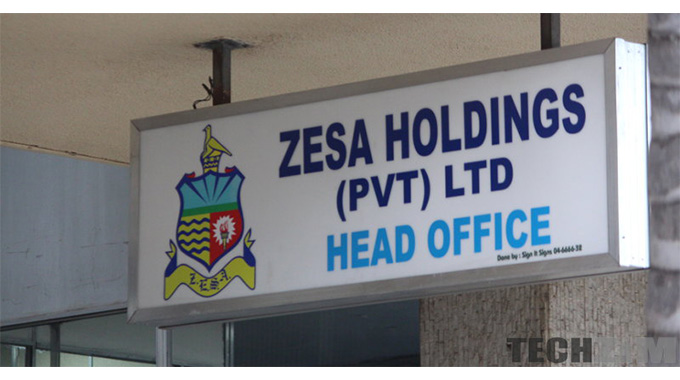COMMENT: Government nod for Zesa forex bills a masterstroke

Zesa was producing 1 219 megawatts (MW) of electricity yesterday.
That output is, by and large, what the utility generates all the time.
At best it rises to around 1 400MW.
Still, the improved generation is below national demand. Regular breakdowns of generating units due to old age, rising demand and low generating capacity have resulted in electricity shortages in the country since 2007.
To ensure that the grid does not totally collapse, Zesa implements load shedding. It intensified the intervention on Wednesday due to depressed local power generation coupled with increased winter demand and power import constraints.

Zesa
At the same time, the Government has been mobilising investment into new generating plants such as the work that was completed at Kariba South some four years ago and ongoing expansion of Hwange coal-fired facility.
It has also been encouraging independent producers to come on stream and most of them have been licensed to build solar farms. These are medium to long term projects.
As a short term measure implemented alongside load shedding, Zesa used to import from Mozambique and South Africa about 400MW. This assisted greatly in plugging the gap caused by low local generating capacity.
However, foreign currency shortages made it impossible for the utility to continue buying electricity from these two countries.
Zesa executive chairman, Dr Sydney Gata indicated early this year that the company needed about US$17 million to finance power imports every month. That is not a small sum of money so even after his impassioned appeal for the allocation, the Reserve Bank of Zimbabwe was unable to make it available.

Zesa Holding executive chairman Dr Sydney Gata
Given low domestic capacity on one hand and rising demand on the other, authorities had to find a way out to ensure that the economy remains afloat. The way out was found on Monday when the Government allowed Zesa to charge exporting companies in foreign currency in terms of Statutory Instrument (SI) 131 of 2022.
“Subject to subsection (2) and designated consumer of electricity may enter into a contract or memorandum of agreement with Zesa to pay in advance for the supply of electricity to Zesa in foreign currency,” reads part of the SI.
The money collected through the window will be used for repayment of external loans, purchasing electricity outside the country, importation of spare parts, transmission, distribution and retail of infrastructure of the electricity network to ensure sustainable supply.
This is a welcome development because the parastatal will, for the next six months, be able to raise resources internally to finance importation of electricity instead of appealing to the central bank for handouts.
This will improve the financial standing of the parastatal. It will be liquid enough to repay external loans, import spare parts and equipment to improve its generation, transmission and distribution infrastructure.
Apart from securing Zesa’s financial position, the permission for it to bill in foreign currency will, in turn, ensure greater electricity supply since the company will now be able to easily pay its suppliers. The load shedding that business and household consumers are complaining about, will ease. This is a major boost to our recovering economy.
However, we note that the SI is effective for the next six months only. We are sure that the central bank will extend the facility until local generation capacity improves, likely over the next nine months when construction of Hwange units seven and eight is completed and brought online as scheduled. The units will add 600MW to the grid, a big injection indeed.









Comments